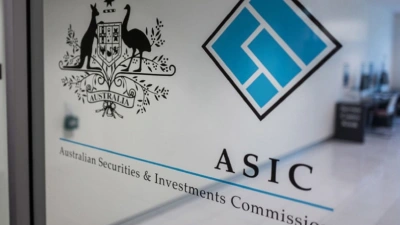Distribution: a war for talent
Nothing much has changed on Money Management’s list of Top 50 Distributors during the space of the last 12 months.
The big groups have maintained their adviser numbers, while mid-sized dealer groups have slowly increased in size. In the middle of the market, some names have dropped out of the list, and have been replaced by boutique groups attracting a steady flow of advisers.
Planner shortage
One reason why the Top 50 list remains fairly static is because of the lack of new, experienced advisers wanting to join the bigger dealer groups.
ING executive director advice Colin Morgan says the dealer groups are all chasing the same advisers and generally offering the same incentives to attract new talent. “There are not many new advisers coming through,” he says. “It takes an adviser about five years to produce the volume, so everybody is trying to poach each other’s advisers.”
The value proposition that encourages advisers to move has now become a commodity, Morgan says. “We are no different to others, and attracting advisers is all down to the value proposition,” he says. “However, a client of the adviser wants the confidence of a larger shareholder behind the adviser, so that makes moving to bigger groups attractive for some advisers.”
Brand power
AXA national manager dealer groups Andrew Waddell says this attraction is important for groups like AXA when they want to recruit more advisers.
But just having a brand is not the only solution. “The dealer business has never had it better, but the challenges are to find ways that will grow that business and change the proposition of being an institutional-branded business,” he says.
“Some advisers are looking for non-institutional branded services, and they have moved away from institutional branded licence businesses.” Of the advisers joining the AXA brand, about half go to AXA Financial Planning, and half go to Charter.
“The challenge is that AXA Financial Planning has to have compelling reasons as to why an adviser would want to join them,” said Waddell.
“We have a strong brand with terrific brand awareness among consumers. Consumers like to know that there is some financial clout behind the brand they are dealing with.”
Waddell says there is also a comfort factor for some advisers. “It does provide comfort for the adviser, as there is a certain affinity with the brand, which grows with their length of service,” he says. “If you have a 15 to 40 year association with the brand, then there is a long history and people want that relationship with AXA to continue.
“The adviser knows the people running the brand, and that continuity and predictability helps form a strong relationship.”
Institutional dealers
But Waddell admits not every client wants to deal with an institution.
The Macquarie brand is very attractive to advisers, although that is not necessarily what the dealer group wants, says Macquarie Wealth Management associate director Doug Webber. “I could go and attract 50 to 100 planners with the brand behind us, but that doesn’t mean the client book will come with them,” he says.
“Nobody owns the client, and it takes time to get a planner to be profitable for the business.”
At Macquarie, the structure of the organisation sees overheads passed down to every division of the business. This means every planner in the wealth management operation bears some head office costs.
As a result, the dealer group is very careful about boosting adviser numbers. “Profit is king because of the profit share, and new advisers are not going to be profitable for a year,” Webber says.
Another problem in attracting experienced advisers is their reluctance to move and start again with no client base. Webber says Macquarie’s new dealer group initiative, Lachlan Wealth Management, is designed to overcome this hurdle, as existing practices can be moved into their structure. “That is why we entered into the Lachlan initiative, to give the Macquarie dealership more scale and a selection base,” he says.
The different styles of dealer groups being set up by the institutions will continue, says National Australia Bank (NAB) Financial Planning and third party regional general manager Matt Lawler.
“We are starting to see many different models, because one size doesn’t fit all,” he says.
“The financial planning industry is becoming more segmented, and there are many different models for people in structures.”
The next generation
Lawler says creating new dealer group models allows an organisation like NAB Financial Planning to get scale and meet the demands of advisers who want to operate with their own licence, but be part of a group.
Another way of growing the adviser pool is to train the next generation of financial planners. Both NAB and ING have initiatives for creating the next generation of advisers. “Scale comes from internal growth,” Lawler says.
“We have a scholarship programm, and that involves us putting advisers through a university course over two years.
“These people will be the ones running the business in the next generation.”
Morgan agrees these trainee advisers are the future of the business for large dealer groups. “The next stage is evolution; some practices have been run by sales people, not business people, and that is where we can help them,” he says.
“We have in-house training run by ING Financial Planning to train up some advisers. It is an incubator, and they will go into existing offices when trained.”
But attracting more advisers is not the only issue facing the large dealer groups.
Impact of regulation
Regulation in the form of financial services reform put management of dealer groups through the hoops a couple of years ago. Now the focus is on conflict of interest rules and the Financial Planning Association’s (FPA) draft conflict of interest rules.
NAB has been involved in drafting the rules, and Lawler says the dealer group agrees with the principles of creating more transparency around advisers. “The adviser is recognised as a valued service, and that is what we agree with,” he says.
“We stated that conflicts of interest should be disclosed. That marks the industry going forward, as the adviser should be supplying a valued service.”
Lawler says the industry has not helped matters in recent years by adding layers of complexity to delivering advice. “The developments that have happened over the last couple of years are complex and convoluted situations, which have made it difficult for the client to compare like for like when looking at value,” he says.
“That confusion leads to mistrust, and the new rules are an opportunity for the industry to restore what is acceptable to the client.” Lawler says another benefit of the new rules is that they show the industry is taking a positive stance on the perception of financial planning, rather than reacting to issues raised by people outside the industry. “If the regulators want the industry to change, we should be seeing how we can evolve,” he says. “We want people to build the business model for the professional.”
Changes to product
NAB’s adviser model has removed bias for revenue and income for the adviser, including adviser splits. “We have made changes in products on the platform, and changed dial-up commissions,” Lawler says. “We have also removed products that have exit fees, as they are confusing to some people and have been mistrusted.”
Lawler says the conflict of interest developments are essentially saying that what the industry found acceptable in the past is not acceptable today.
At AXA there has also had to be some changes to meet the draft rules, Waddell says. “It will mean that there will have to be changes to some of the instruments for pricing,” he says.
“We do have a biased set of terms for AXA and non-AXA products, and we also have a biased AXA last buyer of last resort scheme.”
Waddell says once those areas are changed, AXA and Charter advisers will continue to make their investment choices much as they do today.
“If the adviser does fee for service, conflict of interest is not an issue for them as there is no bias,” he says.
“It will be more of an issue for those advisers who work for tied dealers, so there will not be a dramatic change for AXA advisers.”
But for some dealer groups, conflicts of interest are not a problem, as the organisation has never favoured internally generated products.
Morgan says ING does not see any real impact from the proposed code of interest. “We are already operating under full disclosure, which means our advisers are working very transparently,” he says.
“For us it is full disclosure, as nothing is weighted in favour of ING.”
Morgan says if there is an extra commission on a product it is disclosed, but the commission is not weighted to give advice in one particular direction.
Webber adds that Macquarie has always sold other people’s products, so there has never been a conflict of interest issue. “If there were a conflict of interest, we would make full disclosure,” he says.
The only area where Webber says there might be conflicts in the industry is where dealer groups take equity stakes in platforms. “There would have to be some way of disclosure, as it could affect the adviser’s remuneration, but that is more an issue about ownership.”
Recommended for you
The Financial Services and Credit Panel has made a written direction after advice regarding non-concessional contributions meant an individual was forced to withdraw over $330,000 from their super.
Merchant Wealth’s David Haintz has described how the firm differs from the traditional private equity ventures jumping into Australia, and why M&A isn’t like Married at First Sight.
ASIC has been granted permission to shut down almost 100 websites running investment scams, with the Federal Court describing how its victims were “fattened like pigs to slaughter”.
An Adelaide-based financial planning and accounting firm is set to merge into Count Adelaide, aligning with Count’s ambitions to form a national footprint of scaled equity partnerships.














